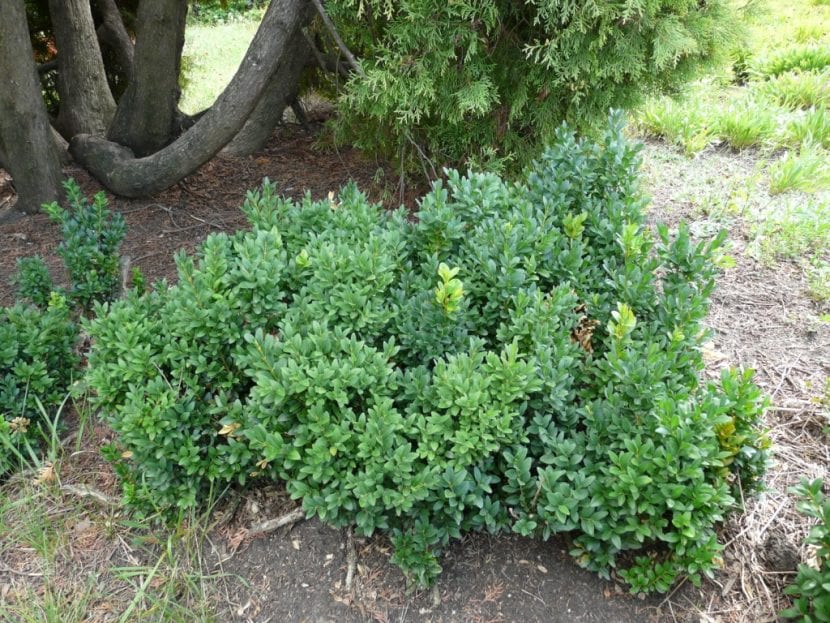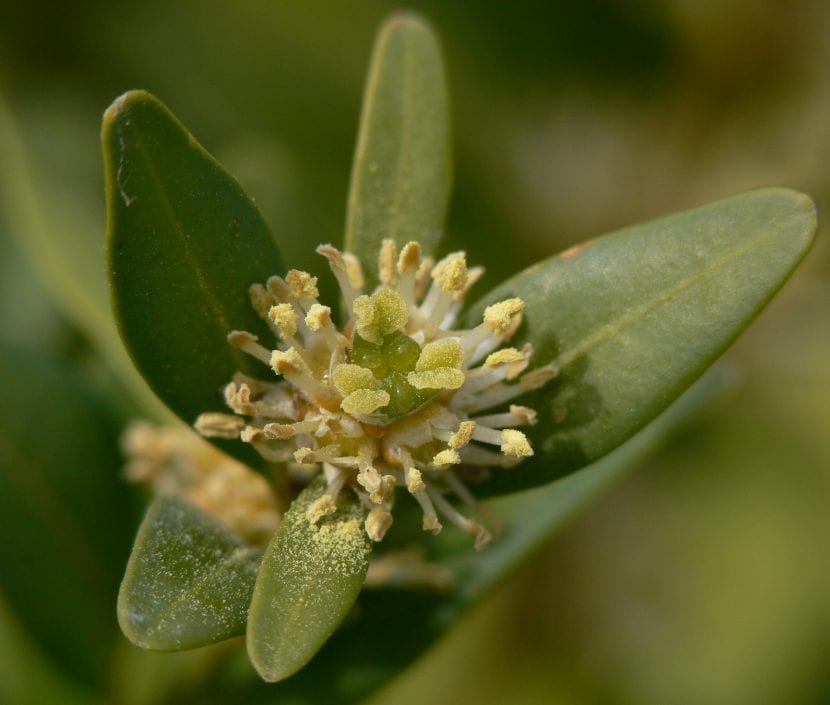
If you are looking for a plant that is resistant and also tolerates pruning well, you will not find any like the buoy. By having small leaves and easily controllable growth, you can have a low or medium height hedge in your garden, and you can even turn it into a beautiful topiary figure.
The boxwood plant is undoubtedly one of the most beloved. For its elegance, rusticity, and also, for its low maintenance. Do you want to know more about him?
What is the boxwood plant like?

Boxwood, whose scientific name is Buxus sempervirens, it is a shrub or small evergreen tree that can reach a height of about 5 meters. It is native to the British Isles and the coast of the Mediterranean Sea; we can also find it on the coast of the Caspian Sea. It is characterized by being a highly branched plant, with lanceolate leaves of about 2cm in length, leathery, dark green on the upper side and lighter on the underside.
Its flowers, which sprout in spring, are monoecious, that is, there are female and male. Both are present on the same plant. They measure about 2mm and are yellow, not very showy. They are rich in nectar, which attracts a wide variety of pollinating insects: bees, wasps, bumblebees, etc. The fruit is a leathery brown or gray capsule, about 1cm long.
The leaves and seeds are poisonous. They should not be ingested under any circumstances as it can cause health problems.
What are their cares?

If you want to have some specimens in your garden, we recommend you take care of them in the following way:
- Location: it must be placed in full sun.
- Soil or substrate: it is not demanding, but it will grow better in those who have good sewer system.
- Irrigation: two or three times a week in summer and a little less the rest of the year.
- Subscriber: it can be paid with universal fertilizer, following the indications specified on the package.
- Multiplication: by direct sowing in the seedbed in spring, or by cuttings of soft wood in summer.
- Pests:
- Mealybugs: they settle on the underside of the leaves and on the stems. They can look like cotton. They are fought with paraffin or with Chlorpyrifos.
- Spiderlings: they leave the leaves yellow, with a silver tone. They are fought with acaricides.
- Boxwood mosquito larvae: they eat the leaves. They fight with Diazinon.
- Management:
- Root rot - leaves quickly lose color, and the plant stops growing. There is no treatment.
- Canker - the leaves turn yellow, staying on the branches. Both on the leaves and on the branches there will be small pinkish pustules, which are from the fungus Rousselian pseudometry. If your boxwood has, you must cut the affected parts, and treat it with systemic fungicides.
- Rust: small black dots appear on the leaves, and they can fall. It can be fought with systemic fungicides.
- Pruning: late winter or autumn. Weak, dry or diseased branches must be removed, and those that have grown excessively must be trimmed.
- Rusticity: withstands cold down to -10ºC.
If you need more information, we invite you to read our special item on the box.
Hello, I would like to know if the roots of the Buxus Sempervirens are aggressive. I wanted to make a hedge in height to close my house but I am afraid that its roots could tear down the wall.
thanks, greetings.
Hi Lucia.
No, do not worry. They will not tear down the wall 🙂
A greeting.